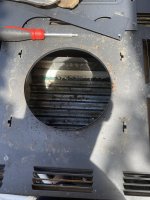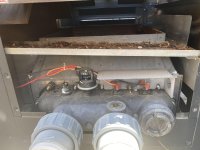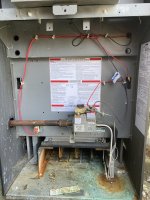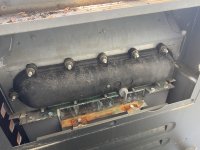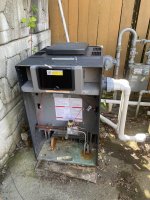Hi there, I tried to turn the heater on for the first time of the season yesterday and it wouldn't light up. No noise of any kind after turning the power switch to on.
It's a Rheem 266A (P-M266A-MN-C). It's the model without a digital display (and no lights that I can see) so I don't think it provides any diagnostic info. The heater is only about three years old and has had no issues the past couple years, so I'm hopeful it's something relatively straightforward. Here are some of the things I tried:
- opened up the front/side panels to make sure there wasn't anything obvious wrong or any critters nested in there
- cleaned out some of the leaves/debris that had made it's way inside (it wasn't too bad)
- cleaned the filter and pump basket
- made sure the pump is on high speed to make sure enough water is flowing through
- lit the pilot light (it lit easily and seems to stay on fine)
I'm only moderately handy and don't know heaters well (it was put in not long after we moved in and this is the first pool I've taken care of), though have done quite a bit of searching/reading here on the forum before posting to get a sense for things. I do have a multi-meter if that's helpful.
Thank you so much for any advice on what I might try next. I've learned a tremendous amount from this forum the past few years!
Lewis
It's a Rheem 266A (P-M266A-MN-C). It's the model without a digital display (and no lights that I can see) so I don't think it provides any diagnostic info. The heater is only about three years old and has had no issues the past couple years, so I'm hopeful it's something relatively straightforward. Here are some of the things I tried:
- opened up the front/side panels to make sure there wasn't anything obvious wrong or any critters nested in there
- cleaned out some of the leaves/debris that had made it's way inside (it wasn't too bad)
- cleaned the filter and pump basket
- made sure the pump is on high speed to make sure enough water is flowing through
- lit the pilot light (it lit easily and seems to stay on fine)
I'm only moderately handy and don't know heaters well (it was put in not long after we moved in and this is the first pool I've taken care of), though have done quite a bit of searching/reading here on the forum before posting to get a sense for things. I do have a multi-meter if that's helpful.
Thank you so much for any advice on what I might try next. I've learned a tremendous amount from this forum the past few years!
Lewis


